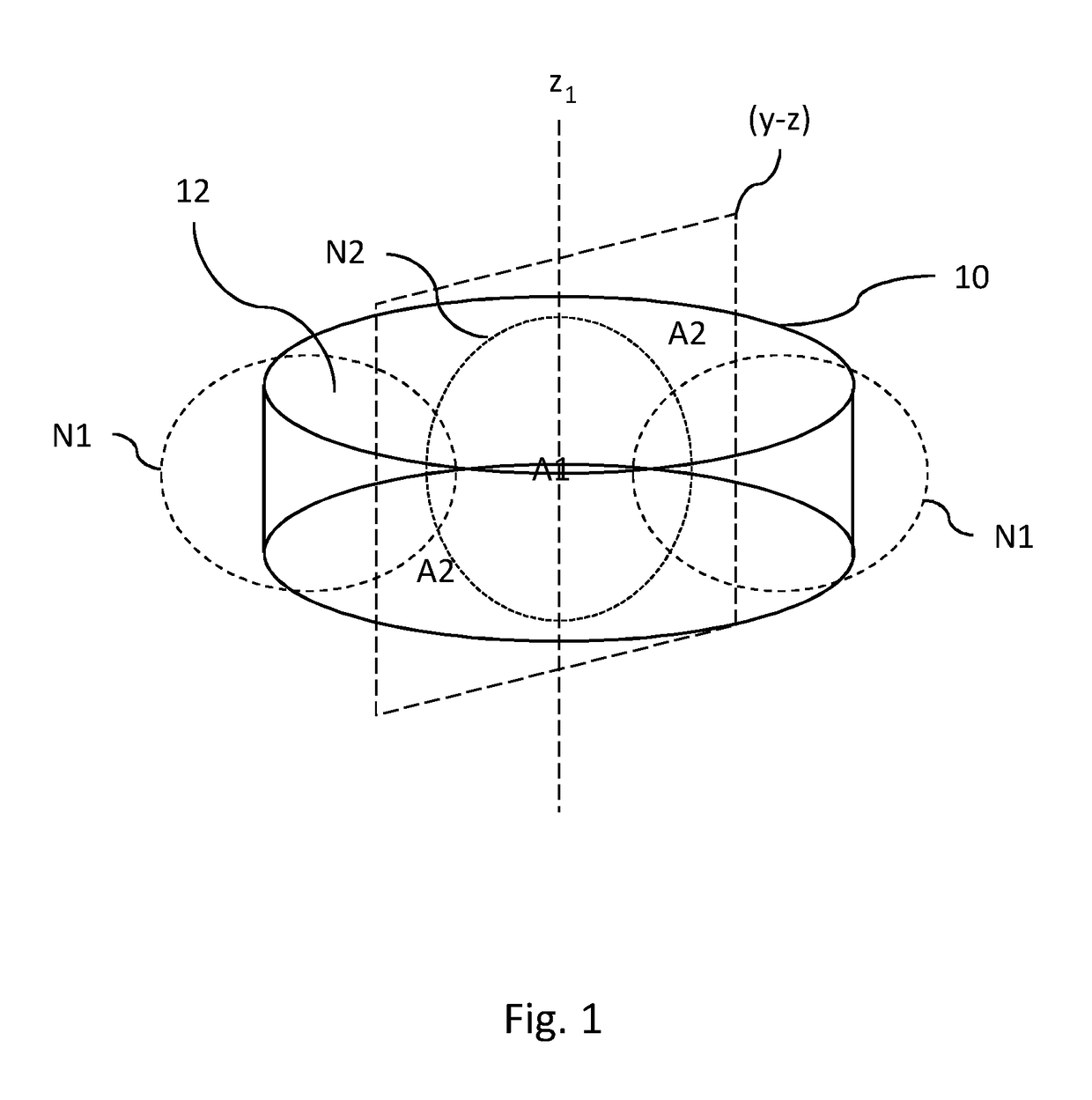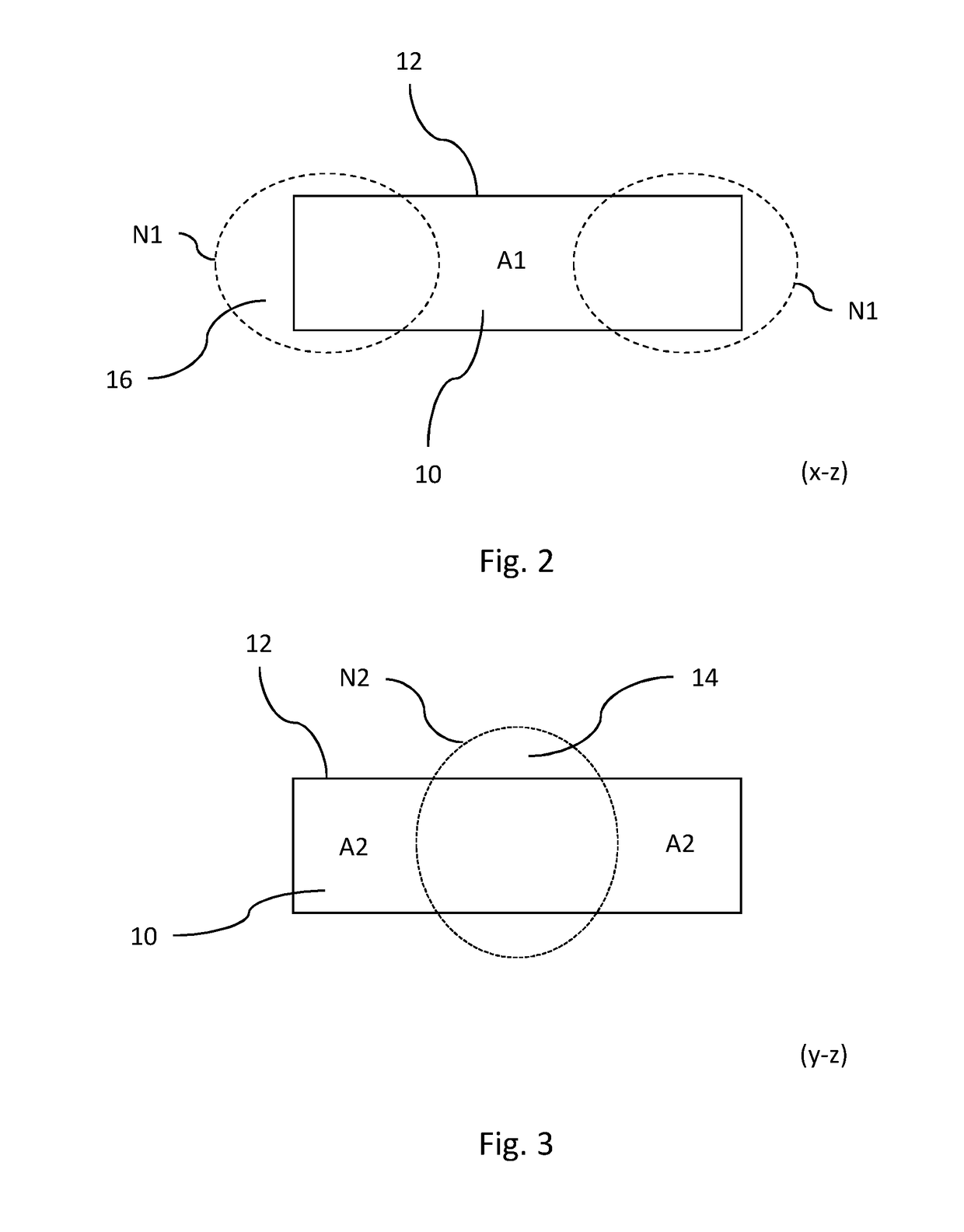Measurement technique for thin-film characterization
a thin film and measurement technique technology, applied in the field of measurement techniques for characterizing thin films, can solve the problems of time-consuming and inefficient, destroying the thin film sample to be measured, and it is difficult to characterize the hall coefficient of the sample and its mobility with any accuracy, and achieves low microwave loss tangent and high permittivity.
- Summary
- Abstract
- Description
- Claims
- Application Information
AI Technical Summary
Benefits of technology
Problems solved by technology
Method used
Image
Examples
Embodiment Construction
[0043]Referring firstly to FIG. 1, there is shown a dielectric resonator 10 having a top surface 12. In this embodiment, the dielectric resonator 10 is in the shape of a right circular cylinder of rotation about a first symmetry axis, z1, although in alternative embodiments, it could be other shapes, such as a right prism having a square or rectangular top surface, provided that the resonator always has at least a first symmetry axis, z1. The resonator 10 is made of a single crystal of a high permittivity material with a low microwave loss tangent, such as sapphire, which has a relative permittivity of 11.6 on its a crystallographic axis and of 9.4 in its b-c crystallographic plane, and a microwave loss tangent of less than 10−5. The dielectric resonator 10 is grown so that the a crystallographic axis is aligned with the first symmetry axis, z1, of the resonator.
[0044]The dielectric resonator 10 is made with a width (or in this embodiment, a diameter) convenient to measure the carri...
PUM
| Property | Measurement | Unit |
|---|---|---|
| relative permittivity | aaaaa | aaaaa |
| relative permittivity | aaaaa | aaaaa |
| relative permittivity | aaaaa | aaaaa |
Abstract
Description
Claims
Application Information
 Login to View More
Login to View More - R&D
- Intellectual Property
- Life Sciences
- Materials
- Tech Scout
- Unparalleled Data Quality
- Higher Quality Content
- 60% Fewer Hallucinations
Browse by: Latest US Patents, China's latest patents, Technical Efficacy Thesaurus, Application Domain, Technology Topic, Popular Technical Reports.
© 2025 PatSnap. All rights reserved.Legal|Privacy policy|Modern Slavery Act Transparency Statement|Sitemap|About US| Contact US: help@patsnap.com



